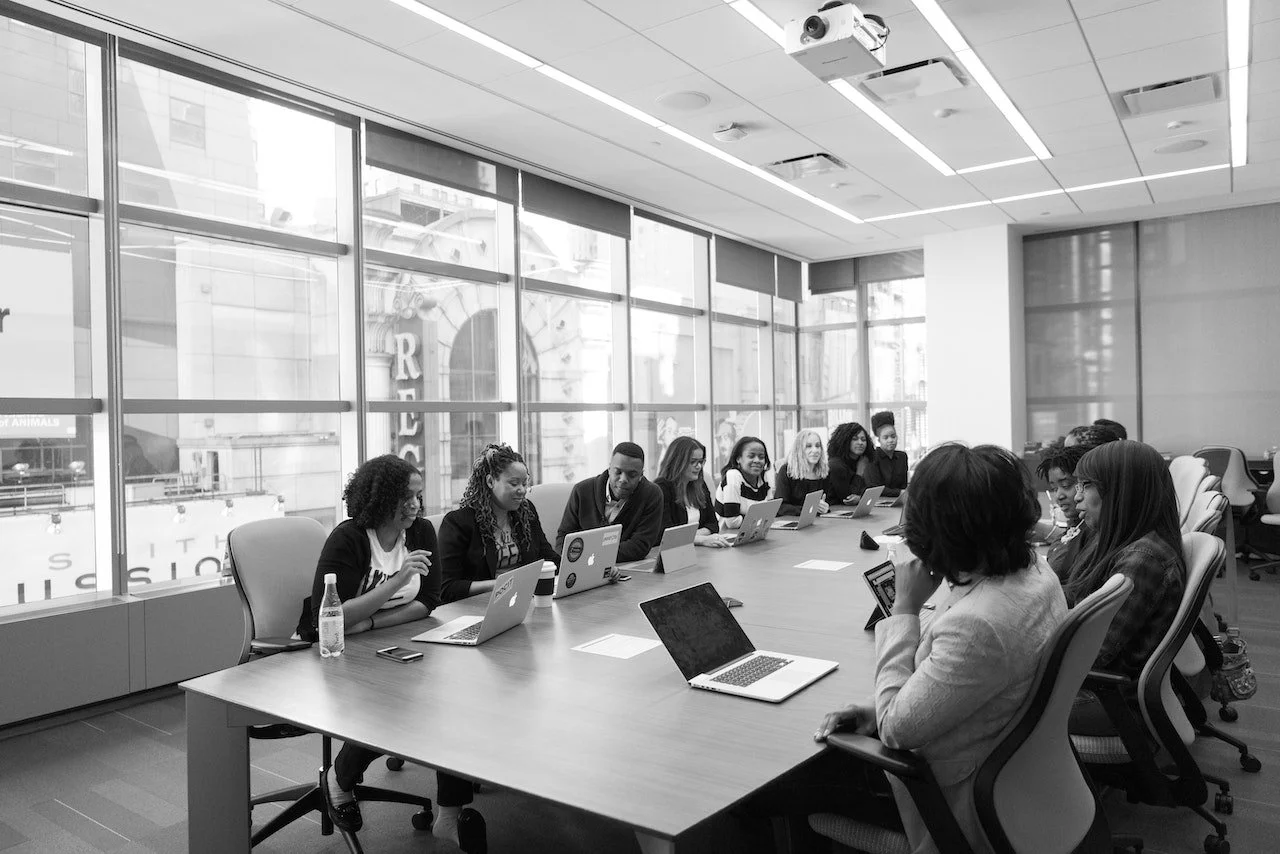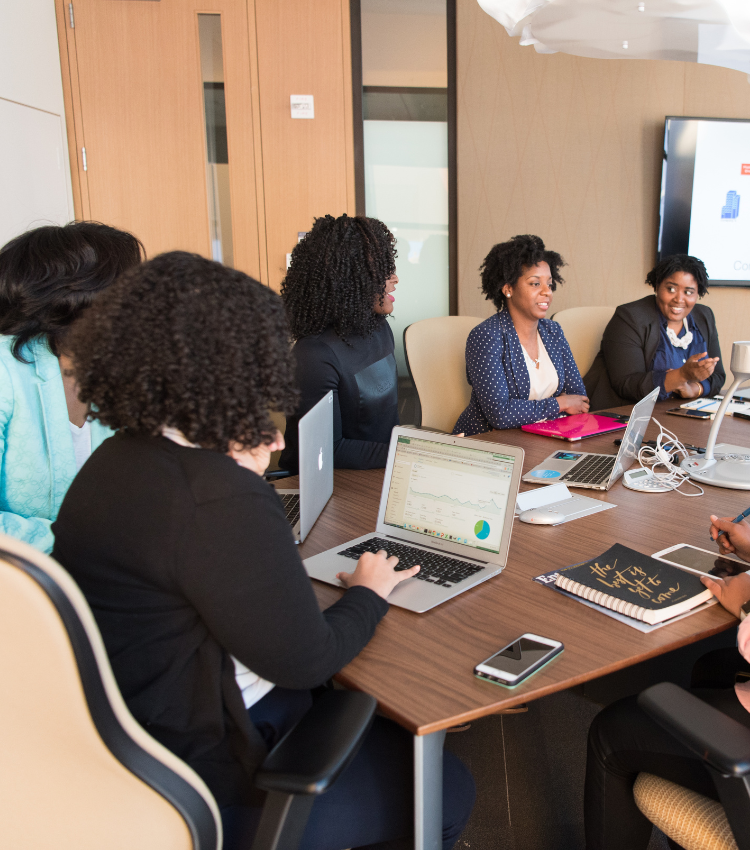How to Use Community Interviews to Hire Within Nonprofits
In my work with nonprofit organizations, I often see closed-process hiring for executive and high-level positions of leadership.
This is understandable, due to limited time capacity and the responsibility an organization might feel to move quickly.
But good leadership (and good leadership decisions) requires deep listening and intentional decision-making, with as much information as possible.
This is why I recommend using community interviews during the hiring process for positions of leadership within nonprofits.
A community interview is one part within the final phases of the hiring process, where community members (from within the organization or those who are impacted by it) will be invited to participate in selecting the best candidate for the open position.
If this feels uncomfortable, I invite you to consider the perspective that there’s not “one right way” to do things within your organization.
If we, as a collective, want to actualize the value of collaboration, we have to consider a variety of approaches to operations that help us move toward greater accountability, particularly to those we work with and the people we serve.
Below, I’ve answered some frequently asked questions about why and how to host a community interview.
Why host a community interview?
Community interviews offer decision-making power to everyone invested in the position, not just a few people.
This is especially important for positions that will require the employee to work directly with and for defined communities. Hosting a community interview ensures that everyone invested in the success of the position has an opportunity to weigh-in about who gets to do that work.
Community interviews also give the final decision-makers critical, real-time information about how each candidate interacts with and responds to the people to whom they will be accountable.
The hiring committee will be able to see the candidates through the eyes of the community, gaining invaluable insights about each candidate’s potential success in the role. Instead of acting in isolation, the committee will be empowered to think and act as a collective, for the community.
Community interviews also ensure a more transparent candidate selection process. Community members will be able to learn what the role will entail, what will be required of the hired team member, and who was behind the initial hiring selections and why.
Finally, the process of interviewing candidates offers community members the opportunity to learn and practice discernment, nurture curiosity, and experience a space for purposeful debate. Community interviews are an excellent learning opportunity for all who participate.
When should we host a community interview?
The community interview should take place during one of the final phases of selection. I do not recommend an open process during the weeding-out phase, as that will be unwieldy and inefficient.
The initial application review and baseline interviews should be conducted by a small, trusted committee. Then you can plan a community interview with the final candidates.
How many people should be interviewed by the community?
I recommend that you narrow the candidate pool to two or three people for the community interview. This allows the community to focus-in and compare the details of each candidate without being overwhelmed by the paradox of choice.
It’s important to note: Offering a real choice to the community interview is important.
Allowing the community to interview the hired candidate is not the same as offering a community interview to multiple candidates.
Who should plan the interview?
A community interview for an executive position or for someone who reports to the board of directors should be planned by the people coordinating the search for hire or by members of the board. If the person in the position will not report to the board, the supervisor, human resources, or an equivalent should plan the community interview instead.
How should we plan for the interview?
Document the Purpose, Outcomes, and Process (POP). Put in writing why you are hosting community interviews, what you hope will emerge, and what the process will be.
Decide who will be in attendance. For example:
Will you invite key stakeholders (e.g. the person’s direct supervisor or direct report[s])?
Will the community interview be open to the whole organization (and partners)?
Will the community interview be fully open to the public and the community you serve
Be prepared to explain your choice.
Determine the format.
How long will the interview last? I recommend the interview last 1.5 to 2 hours, depending on the structure you prefer. (This time estimate does not include additional phases of the hiring process.)
Will you have a question-and-answer period? (If so, consider asking community members to send questions in advance to determine ahead of time which ones will be asked.)
Will you include an opportunity for the candidates to speak or present on a topic? (If so, determine the question or prompt.)
Determine the location. If the community interview will happen in-person, offer an option for live-streaming for people who cannot attend in-person. Determine if you will record (and if you do, who will have access to the recording).
Identify the facilitator(s). Decide who will greet candidates and coordinate the flow of each interview.
Create a feedback survey. Develop questions that you will ask interviewers to answer after they have met each candidate.
How should we prepare the candidates?
Let candidates know that a community interview will be a part of the hiring process as soon as possible. Candidates should know that if they make it to the final phases of the process, they will be asked to join a community interview.
Send the presentation prompt, format details, an explanation of the role, and how the position relates to others within the organization to all candidates who have been invited to the interview.
Do not send the names of selected candidates as this might result in attendees being in contact prior to the community interview, which is not advisable.
How should we prepare community members attending the interview?
Send a concise package to community members who will be part of the interview process that includes each candidate’s résumé, cover letter, and presentation prompt(s), plus the questions community members will be asked after the interview (with a link to complete the evaluation, if possible).
Can people who know the candidates personally attend the interview?
Yes. In fact, in small communities or places considering an internal hire, this is quite probable.
Bias is impossible to eliminate in all cases. However, if you have enough people involved, the community-informed or consensus-based decision will outweigh the impact of any individual bias.
How can community members share feedback?
Send community members a feedback survey to complete within 72 hours. This feedback survey should have no more than five questions and allow space for additional thoughts and comments. This survey data should be available to the final decision-makers prior to the meeting(s) to determine the final candidate selection.
I believe that having power means having voice, visibility, representation, and influence in decision-making about issues that affect our lives.
Social justice requires that we share (not hoard) all of these things – the makings of social power.
If the nonprofit organizations that benefit our local communities begin to invite community members into the hiring process, we begin to create shared power in the places where we work and live.
Including this approach to interviewing allows us to shift organizational culture toward sharing power – which ultimately helps us take real action to advance justice and equity.



